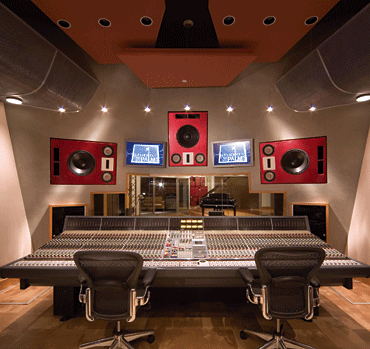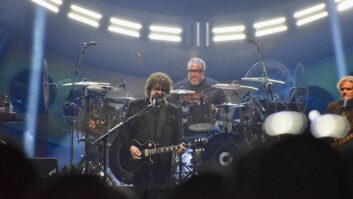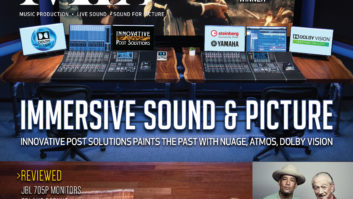

Forty years ago, Ed Long of Calibration Standard Instruments introduced the then-revolutionary concept of the Near-Field Monitor™ with his MDM-4 speakers, and the recording studio hasn’t been the same since. There are numerous advantages to monitoring in the near-field, such as a reduction (but not elimination) of the effects of room acoustics on the listening space. Large midfield and far-field monitors are hardly suited to smaller studio environments, so along with the rise of the project studio came the popularity of near-fields.
THE ISSUE
In any studio, the room itself is part of the listening experience. Even in the largest rooms, near-field speakers can be an essential component to successful mixing, either as secondary references to the visiting engineer who may be unfamiliar with the main monitors, or simply as a “real-world” indication of how mixes sound on smaller systems. But no matter what size the room, close-in listening definitely has its drawbacks, especially in high-SPL situations where the near-field concept doesn’t work. Once large amounts of low frequencies (from the monitors and/or accompanying subwoofers) begin building up in an untreated control room, the near-field concept of reducing the acoustical interaction between the speakers and nearby walls, ceilings, floors and gear/furniture/console surfaces becomes meaningless.
The other drawback of speakers designed for close listening is the width of the sweet spot, which may be fine for the mixing engineer, but may not offer adequate dispersion with accurate stereo imaging for multiple persons (producer/artists/clients/director/etc.) within the room. A well-designed mains speaker system — either freestanding or soffit-mounted — in a properly treated space can provide the ideal combination of accuracy, soundstage/stereo imaging and high-volume playback in such cases.
There are numerous considerations in seeking the right monitoring solution for your situation. Most important of these is realizing that the room and the monitors need to work together to meet the goal, and factors such as room volume, existing (or planned) acoustical treatments and even AC power sources, heating/cooling systems and mounting systems all combine to be just as important as the selection of the monitors themselves.
SURVEY SAYS
For the purposes of this article, we defined main monitors as systems with 12-inch or double-10-inch woofers or larger offered as stock designs from various pro audio suppliers. And if your favorite high-end audiophile system was left out of this survey, sorry, but we focused on pro audio gear. We also did not include fully custom systems, such as those from George Augspurger and others, which don’t necessarily lend themselves to a chart format.
That said, many of the systems included on the charts on pages 32 and 34 offer numerous custom options. These range from various amplification possibilities — some with several crossover and/or I/O selections from which to choose — or different flavors or bi/tri/quad/penta-amping or cabinet finishes. We’ve always been partial to basic black, but if you want zebrawood trim or candy apple — red lacquer, most companies will oblige — for a price. Some manufacturers will even tailor their cabinet dimensions — somewhat — to fit them into existing soffits or offer low-profile versions for center-channel installs. We also encountered so many subwoofer options that listing them all would entail an article longer than this one, but suffice to say, if you need more bass than these monsters supply, adding one sub (or a couple) should remedy that problem.
What did surprise us was the range of systems available, with more than 60 models listed, ranging from $2,500 to nearly $70,000 each. As many readers may be looking at multichannel systems, the list prices in the chart refer to a single-speaker pricing, even if some of the monitors are normally sold in pairs. So if you’re in the market for a system that puts the “loud” into loudspeakers, you should be able to find what you need in the pages to follow. Happy hunting!

READ: An easily downloadable pdf “shopping guide” for main studio monitoring systems






